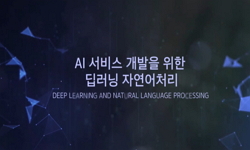A large amount of floating debris from land-based sources during heavy rainfall has negativesocial, economic, and environmental impacts, but there is a lack of monitoring systems for floating debrisaccumulation areas and amounts. With the recent devel...
http://chineseinput.net/에서 pinyin(병음)방식으로 중국어를 변환할 수 있습니다.
변환된 중국어를 복사하여 사용하시면 됩니다.
- 中文 을 입력하시려면 zhongwen을 입력하시고 space를누르시면됩니다.
- 北京 을 입력하시려면 beijing을 입력하시고 space를 누르시면 됩니다.


딥러닝 기반 육상기인 부유쓰레기 탐지 모델 성능 비교 및 현장 적용성 평가 = A Performance Comparison of Land-Based Floating Debris Detection Based on Deep Learning and Its Field Applications
한글로보기https://www.riss.kr/link?id=A108565357
- 저자
- 발행기관
- 학술지명
- 권호사항
-
발행연도
2023
-
작성언어
Korean
-
주제어
부유쓰레기 ; 객체 탐지 모델 ; 드론 ; 딥러닝 ; 공간분포 ; Floating debris ; Object detection model ; Drone ; Deep learning ; Spatial distribution
-
등재정보
KCI등재,SCOPUS,ESCI
-
자료형태
학술저널
- 발행기관 URL
-
수록면
193-205(13쪽)
- DOI식별코드
- 제공처
-
0
상세조회 -
0
다운로드
부가정보
다국어 초록 (Multilingual Abstract)
A large amount of floating debris from land-based sources during heavy rainfall has negativesocial, economic, and environmental impacts, but there is a lack of monitoring systems for floating debrisaccumulation areas and amounts. With the recent development of artificial intelligence technology, thereis a need to quickly and efficiently study large areas of water systems using drone imagery and deeplearning-based object detection models. In this study, we acquired various images as well as drone imagesand trained with You Only Look Once (YOLO)v5s and the recently developed YOLO7 and YOLOv8sto compare the performance of each model to propose an efficient detection technique for land-basedfloating debris. The qualitative performance evaluation of each model showed that all three models aregood at detecting floating debris under normal circumstances, but the YOLOv8s model missed orduplicated objects when the image was overexposed or the water surface was highly reflective of sunlight.
The quantitative performance evaluation showed that YOLOv7 had the best performance with a meanAverage Precision (intersection over union, IoU 0.5) of 0.940, which was better than YOLOv5s (0.922)and YOLOv8s (0.922). As a result of generating distortion in the color and high-frequency componentsto compare the performance of models according to data quality, the performance degradation of theYOLOv8s model was the most obvious, and the YOLOv7 model showed the lowest performancedegradation. This study confirms that the YOLOv7 model is more robust than the YOLOv5s andYOLOv8s models in detecting land-based floating debris. The deep learning-based floating debrisdetection technique proposed in this study can identify the spatial distribution of floating debris bycategory, which can contribute to the planning of future cleanup work.
동일학술지(권/호) 다른 논문
-
한국형 코즈믹 레이 토양수분 관측 시스템을 위한 국내 적용성 연구
- 대한원격탐사학회
- 정재환
- 2023
- KCI등재,SCOPUS,ESCI
-
한국과 중국의 도시별 위성기반 CO/CO2, CO/NO2 비율 특성
- 대한원격탐사학회
- 유지은
- 2023
- KCI등재,SCOPUS,ESCI
-
멀티 브랜치 네트워크 구조 탐색을 사용한 구름 영역 분할
- 대한원격탐사학회
- 정치윤
- 2023
- KCI등재,SCOPUS,ESCI
-
객체 기반 영상 분류를 위한 히스토그램 역투영을 이용한 클래스 샘플 추출 기법에 관한 연구
- 대한원격탐사학회
- 예철수
- 2023
- KCI등재,SCOPUS,ESCI




 ScienceON
ScienceON KISS
KISS






